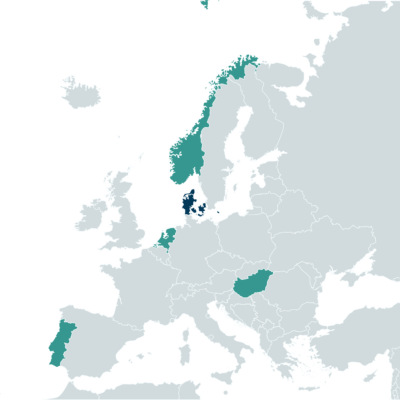Are Best NbS – Aquatic and Riparian Ecosystems: Biodiversity and Economic Service Transformations from NbS
Call
Duration
01/04/2025 – 31/03/2028
Total grant
Approx. 1.4 mil. €.
More information
Brooks A. Kaiser
baka@sam.sdu.dk
Partners of the project
- Department of Business and Sustainability, University of Southern Denmark, Esbjerg, Denmark
- UiS Business School, University of Stavanger, Stavanger, Norway
- Center for Molecular and Environmental Biology, University of Minho, Braga, Portugal
- MOME Innovation Center, Moholy-Nagy University of Arts and Design, Budapest, Hungary
- Department of Sustainable Development, Utrecht University, Utrecht, Netherlands
- Secret Hotel, Aarhus, Denmark

Context
Biodiversity is crucial for healthy ecosystems and human well-being. Integrating individual and collective values for biodiversity into plans for using aquatic and riparian habitats is made difficult by a lack of understanding of the processes through which these values are created as well as biodiversity’s position outside traditional market exchange mechanisms. Further complications arise from differences across stakeholders’ preferences, which can complicate decision-making by being poorly understood. The project’s relevance for society lies in its potential to improve individual and collective understanding of values for biodiversity, so that decisions and analysis resting on values for biodiversity’s amenities and services become better able to reflect trade-offs required to provide them through NbS.
Main objectives
ARE BEST NbS will foster stakeholder engagement and promote open communication throughout the process of NbS project implementation to maximize the potential returns from NbS investments that capture diverse biodiversity values and trade-offs. The project addresses four key questions, using collaborative research tools from environmental psychology (mental modelling), economics (stated and revealed preference elicitation), ecology (biodiversity gains) and arts and design (performance, data storytelling) to improve stakeholder engagement, project evaluation strategies and processes, and the impact of artistic collaboration and mental models on the valuation of biodiversity and natural capital.
Main activities
ARE BEST NbS acts across the local, national, and pan-European scales and three case studies to:
- Evaluate historical records of investments impacting aquatic and riparian habitats for economic and ecological outcomes, using revealed preference techniques and creating synthetic controls for use evaluating NbS;
- Develop and implement national-level experimental surveys combining data-storytelling, and economic theory for eliciting preferences and values for biodiversity (all countries), and local-level narrative survey designs and artistic performance (Danish case study with Vejle membrane NbS) for understanding the impact of lived experiences on stakeholder choices;
- Conduct stakeholder and expert interviews of NbS and use results to map NbS mental models across stakeholder groups to improve engagement (all cases);
- Collect and curate new and existing biodiversity data from NbS investments, using these to develop and test valuation biodiversity frameworks from different stakeholder perspectives (Portuguese case study with riparian forest NbS with water treatment plant);
Use results to guide recommendations for NbS project evaluation tools and stakeholder engagement, developed and tested with co-design workshops, urban data physicalisation (Hungarian case study with Lake Balaton shore protection NbS) and artistic performances. Project outputs will include artistic performances, academic publications, policy briefs and stakeholder meetings (all cases/ countries).

